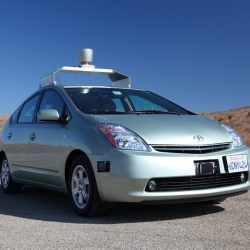
While much work is being done to bring autonomous vehicles to the roads, the closest most of us have yet got is cruise control, which has actually been around since the 1950s, appearing as “Auto-Pilot” in 1958 Chryslers and Imperials. Now Cadillac is looking to update things with road testing currently underway on a semi-autonomous technology dubbed “Super Cruise” that offers fully automatic steering, braking and lane-centering in highway driving – under certain conditions.
The Super Cruise technology relies on a combination of radar, ultrasonic sensors, cameras and GPS map data to provide semi-autonomous driving capabilities on the highway even in bumper-to-bumper traffic. The key to this is the use of lane-centering technology that uses forward-looking cameras to detect lane markings, together with GPS map data to detect curves and other characteristics in the road.
Super Cruise builds on many technologies already available as part of its Driver Assist Package in the 2013 Cadillac XTS and ATS sedans that come together to provide what Cadillac claims is 360-degree crash risk detection and enhanced driver assist features. These include rear automatic braking, forward collision alert, full-speed range adaptive cruise control, safety seat alert, automatic collision preparation, lane departure warning and side blind zone alert.
Cadillac hopes to have Super Cruise technology ready for its vehicles by mid-decade, but even when it does appear drivers won’t be able to catch some shut-eye on long trips. As the technology is limited by external factors such as weather conditions and the visibility of lane markings, drivers will have to take the wheel when the system can’t gather reliable information.
